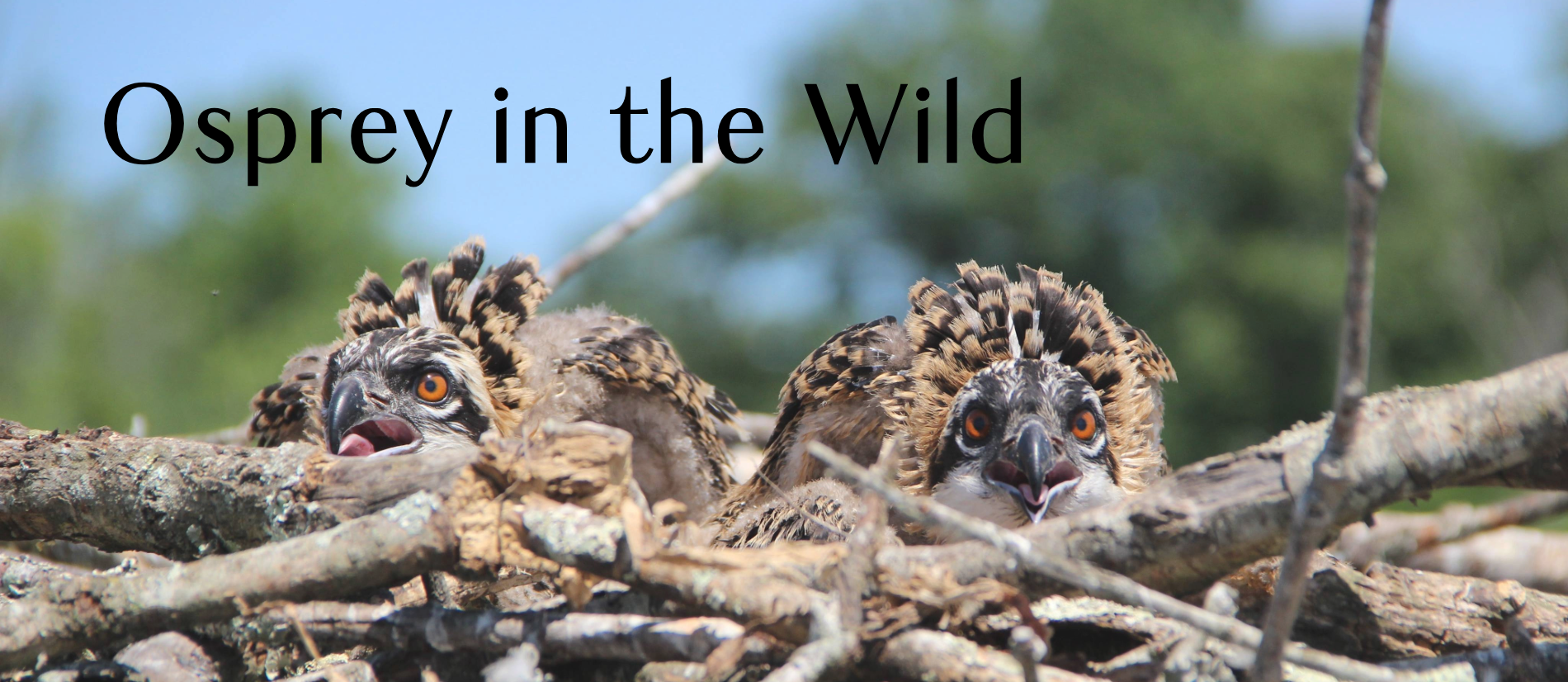
Look to the sky along the Chesapeake Bay shoreline and you’ll likely see an osprey. The Bay supports the largest osprey breeding population in the world. In the 1970s, osprey numbered 1,500 breeding pairs due to DDT contamination. Now populations have rebounded to an estimated 8,000 to 10,000 breeding pairs in the mid-Atlantic. How do we know stats on osprey population, health, and migration? Ask Park Naturalist Greg Kearns and he’ll answer with his banding tools in hand.
Join Greg to experience ospreys up close as chicks are banded, measured, and counted at their nesting platforms at Patuxent River Park. Participants may be able to help with banding if the chicks meet the minimum size requirement. The banding data collected is sent to the Bird Banding Laboratory at the Eastern Ecological Science Center to help scientists understand migration patterns, population dynamics, sources of mortality, and bird lifespans. Much of the critical information known comes from tracking and reporting banding data.
We’ll learn how Greg and his interns have installed and maintained over 100 osprey nest platforms along 25 miles of river and banded over 5,000 adult and juvenile ospreys over the last 30 years. With the osprey population growing, the birds have exceeded the availability of natural nesting sites. Human-made nesting structures are almost always occupied, and ospreys then choose to nest on cell towers and lighting structures. This can create conflicts with human values and needs.
Please note that all bird observation and handling techniques match or exceed the practices outlined in the Bird Banders Code of Ethics. Our leader, Greg Kearns, is a Senior Park Naturalist with over 40 years of experience and extensive research on the osprey, sora rail, and wetland ecology at Jug Bay. He is an accomplished speaker, photographer, and birder. Greg was named Conservationist of the Year by the Maryland Dept. of Natural Resources in 2006 for his work on the restoration of the wild rice marshes on the river. He also received the Jug Bay Award for significant contributions to the environment and was given the 2017 National Wetlands Restoration and Conservation award from the Environmental Law Institute in Washington, DC. Greg does the technical monitoring work and also makes it accessible to the public through these unique educational opportunities.
Difficulty: Easy, must have the ability to walk on a dock, climb steps into the boat, and step down to disembark.
- Our meeting location can be found in your registration confirmation email when payment is complete.
- Watch for additional details in a welcome email a few days before the date.
- Children over the age of 10 are welcome. Must be able to sit quietly and follow directions.
- Dress according to the weather. Layers of clothing work best. Include a hat for sun protection or warmth, depending on the season.
- We will be out on the water on a pontoon boat and temperatures can vary due to wind.
- Wear sturdy closed-toe hiking or athletic shoes with non-slip soles that can safely handle slippery surfaces.
- Bring water, snacks, sunblock, bug spray, and a camera with accessories.
- Bring binoculars for birding if you have them.
- Bring a first aid kit for your personal use.
- No pets, please.
Payment and Cancellation Policy: Payment is due online at the time of registration. Cancellations made seven or more days in advance of the event will receive a refund minus a 5% processing fee. Cancellations made within seven days of the event will not receive a refund. Events and field trips with fees of $10 or less are not refundable at any time unless canceled by NHSM. NHSM retains the right to update or change these requirements at any time.
For questions, please email Jayne at JAsh@marylandnature.org.